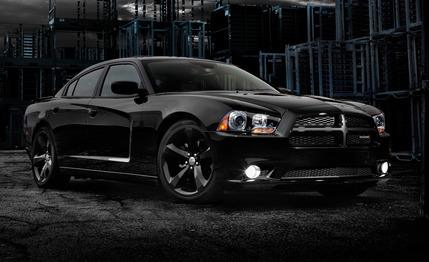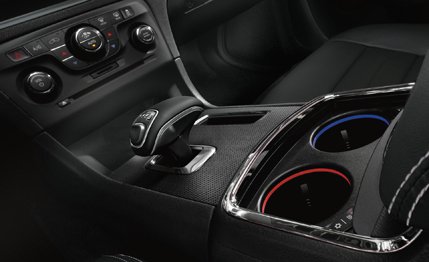
 Instrumented Test
Instrumented Test


What Is It?
It’s the recently redesigned Dodge Charger with the Pentastar V-6. We’ve already tested a 2011 Charger with the V-6, though. That one was even rear-wheel drive, like this example. So why are we testing this one now? The first car weighed three fewer pounds less, and it was orange with a black and tan interior; this car is all black. Also, this one has the new eight-speed ZF automatic, whereas that orange car had a five-speed.
How Does It Drive?
It drives a lot like that other V-6 Charger, which is to say like a big German sports sedan. There’s a masterful balance between ride and handling, and the car is much more agile than its immense size would suggest. It still feels big from behind the wheel, even when you’re pushing it, but it moves like a much smaller car.
The eight-speed takes some of the edge off our complaints about gear spacing in the old five-speed but doesn’t smooth them out entirely. Stretching five ratios so thin meant that the fiver held onto first until nearly 60 mph and second until beyond 90, seriously hindering around-town pep. With three extra gears, though, Chrysler allotted only one more ratio for the 0-to-100 window, with shifts now happening around 45, 65, and 100. Green-light readiness is notably increased, but we wonder if maybe one more gear in that gap wouldn’t have helped more. The Audi A8 has a version of this same transmission but with different gearing; its shifts occur around 35, 55, 85, and 105. Of course, its 80-hp advantage also helps it step off with more aggression. The shorter gearing of the eight-speed versus the five accentuates the Pentastar V-6’s nonlinear power band, the quicker spurt through each gear making the lulls and surges in delivery more noticeable.
It’s easy to see, though, that Chrysler’s focus was the top end in selecting ratios for its version of the eight-speed. This was not for speed, mind you, but rather fuel economy—the Charger hits its 114-mph governor in eighth, seventh, sixth, fifth, and fourth. At 70 mph in eighth, the engine turns 1500 rpm. Heck, at 114 mph in eighth, it’s turning just over 2400. Such low engine speeds are the root of the Charger’s 31-mpg highway rating from the EPA. In the city, the car is rated at 19 mpg. We averaged 20 over the course of our 1100 miles with the car.


There’s more to this transmission than gear count, though, and our reactions to the rest of its operation were mixed. Shifts at wide-open throttle are harsh, although few drivers are likely to ever experience more than two of them at a time, given that most are going to call for full-bore acceleration only while cruising at high speed. Here, too, the eight is disappointing, taking approximately two seconds to kick down from eighth to second after we’d floored the accelerator. Also, the transmission stopped obeying commands from the paddle shifters at one point during our test. Pulling over and turning the car off made the problem disappear, although not from our memory.
How Does It Stack Up?
In a world of front- and all-wheel-drive family sedans, the rear-drive Charger and its Chrysler 300 sibling mostly fight among themselves. Their satisfying rear-drive dynamics separate them from everything but the Hyundai Genesis, which most certainly has rear-drive dynamics but isn’t a car we’d call particularly satisfying.
What’s the Cost?
Although the five-speed automatic remains available with the 292-hp V-6, the eight-speed automatic is the transmission of choice, and a Charger so equipped starts with the $27,420 SE. An SXT like that tested here—it adds heated power mirrors, Chrysler’s Uconnect touchscreen infotainment system with Bluetooth and Sirius satellite radio, heated power front seats, and a remote starter—costs $29,420. At $31,420, the SXT Plus package adds leather seats—heated now in the rear, too—and a rear anti-roll bar. The most notable option of the car we tested is the $1495 Blacktop package, which adds the black grille and 20-inch wheels, a 506-watt audio system, a sport-tuned suspension, and paddle shifters. Add a sunroof and a couple of technology bundles, and this Charger stickered at $35,310. With smoother power delivery and better transmission calibration, this would be a great car. But in its current state, the new Charger is a very good car let down by a middling powertrain.